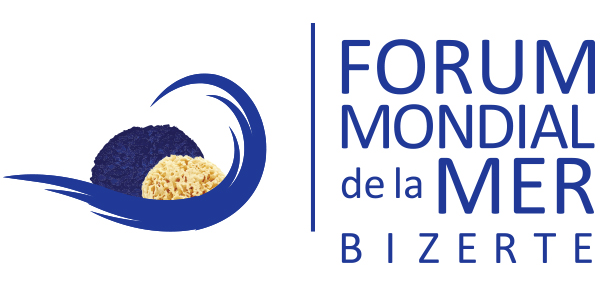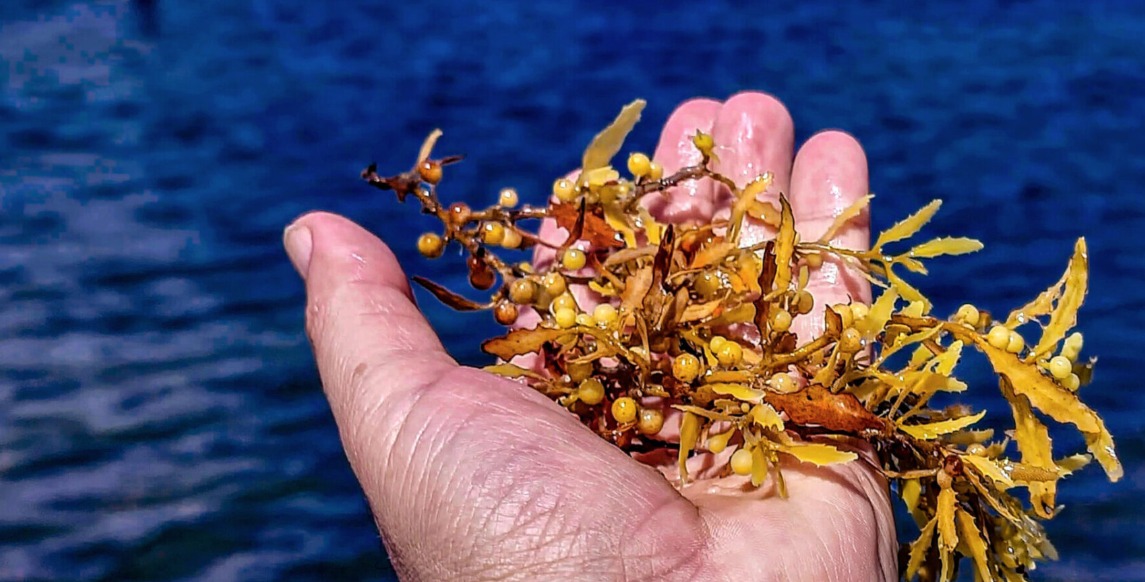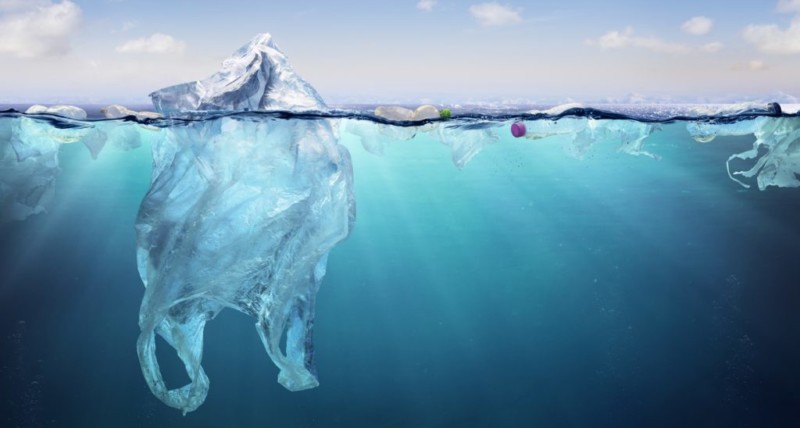In 2015, foul-smelling mats of a brown macroalga called sargassum piled up as high as 1.2 meters (4 feet) on the beaches of Barbados, recalls Joshua Forte. It was the fourth consecutive year of what had become an annual nightmare, with around 18,100 kilograms (20 tons) of algae flooding Caribbean shores each year—wreaking havoc on the region’s tourism-based economies.
The stench of rotten eggs filled the air, but Forte smelled something else: opportunity.
A year earlier, Forte had founded an organic fertilizer company called Red Diamond Compost. He was already selling a soil additive made from sunflower seeds called Liquid Sunshine. But the sheer abundance of sargassum was impossible to ignore.
Forte began collecting the seaweed by hand, hauling 27 kg (60 lb) sacks in the back of a pickup truck. It became the raw material for a new product called Supreme Sea, a soil additive that includes plant growth hormones and microorganisms extracted from sargassum. The leftover biomass is then composted into a humus-rich, crop-safe product. “The idea was to have the greatest impact possible on the influx of sargassum while contributing positively to agriculture,” Forte told Mongabay.
Sargassum is rich in nutrients, minerals, and microorganisms that support and even boost plant growth—such as iron, magnesium, potassium, and calcium. But instead of simply adding nitrogen and phosphorus to the soil, Supreme Sea improves how efficiently plants absorb these nutrients, thereby reducing the need for synthetic fertilizers while increasing yields and crop health. It’s a promising solution that could offer both a regional economic opportunity and a new tool for agroecology—a sustainable farming approach targeting food security alongside environmental health.
Today, other entrepreneurs across the Caribbean are developing a sargassum-based agricultural product industry—and interest is growing, Forte said.
“This could be huge for the Caribbean economy,” said Allen McGonagill, sustainability director at Carbonwave, a company collecting sargassum in Mexico and Puerto Rico.
Sargassum can be transformed into a variety of products—from plastic- and leather-like materials to biofuels and cosmetics. If these industries grow big enough, they could collectively divert sargassum away from beaches—a boon for tourism.
Sargassum as a Sustainable Farming Tool
Sargassum acts like an ocean sponge, absorbing nutrients as it drifts across the Atlantic. But there’s a catch: the algae often contain high levels of arsenic, making them dangerous to apply directly to soil without treatment. That’s why places like Vieques, Puerto Rico, have banned the use of sargassum in compost or fertilizer.
To address these health risks, companies—and even individuals composting at home—must properly rinse and process the algae. At Carbonwave’s agricultural division, Sarga Agriscience, this is a crucial step. The company uses a cold-press extraction method to retain beneficial proteins while avoiding heat, acids, or harsh chemicals that could leave behind toxic residues.
Other processing methods include microbial fermentation or drying and grinding, though the latter leaves nutrients trapped inside cells, reducing bioavailability.
“We’re helping plants extract nutrients more efficiently,” said McGonagill.
Their biostimulant, SargaExtra, can increase crop yields by up to 10%, according to Jonas Kunz, Carbonwave’s agricultural director—particularly for barley, corn, and soy. While biostimulants don’t replace fertilizers entirely, they reduce the amount needed.
Turning Waste into Resource
Red Diamond’s Supreme Sea has shown promising results in field trials, such as sports fields in the UK, where reducing synthetic fertilizer by half led to better turf color than fertilizer alone. Field tests in Spain have shown improved tomato and cucumber yields. The company is also conducting tests in Cameroon and other African countries.
Meanwhile, Carbonwave’s collected sargassum (about 25,000 tons last year) is just a drop in the ocean compared to the 20 million tons estimated to pass through the Caribbean annually.
“If agriculture embraced seaweed-based biostimulants, it could completely solve the beach sargassum issue,” said McGonagill. “But it’s a big transition.”
Sargassum harvesting is seasonal, peaking from March to October, which poses challenges for product consistency and supply chain planning. Moreover, accurate volume estimates rely on satellite data and beach monitoring, making logistics tricky for startups.
That’s why Forte is investing in a floating barrier with a net that extends 3 feet underwater to trap sargassum before it reaches the shore. This also helps preserve the algae for use, as beached sargassum decomposes quickly, releasing hydrogen sulfide and ammonia—noxious gases that are toxic and unpleasant.
An Emerging Industry with Regional Potential
While the industry is still small, the stakes are high. In Mexico, sargassum is already being used for eco-concrete and biogas. In Miami, competitions have emerged to reward innovative uses of sargassum, including entries from Carbonwave and a St. Lucia-based biofertilizer firm, Algas Organics.
As the industry scales, ownership questions may arise—who controls seaweed floating in international or territorial waters?
“We’ve only scratched the surface,” said McGonagill.
Still, Forte remains driven by the agroecological potential. As a child, he watched his grandmother tend a lush garden in Barbados, practicing what we now call permaculture—recycling plant matter back into the soil in a zero-waste cycle.



